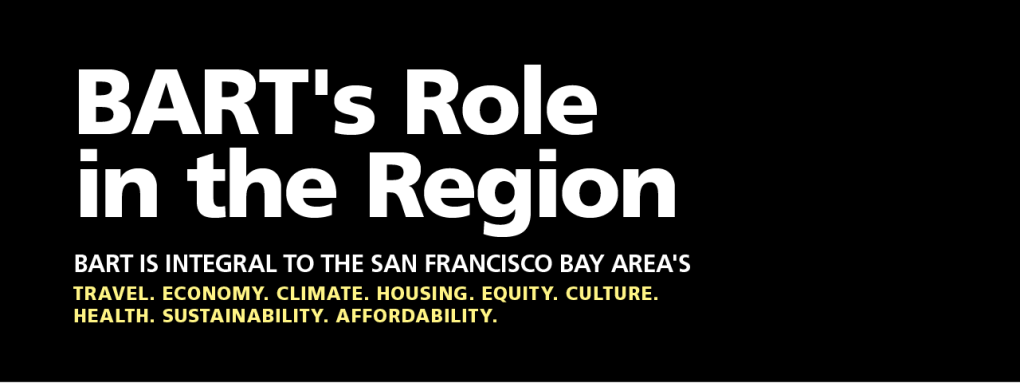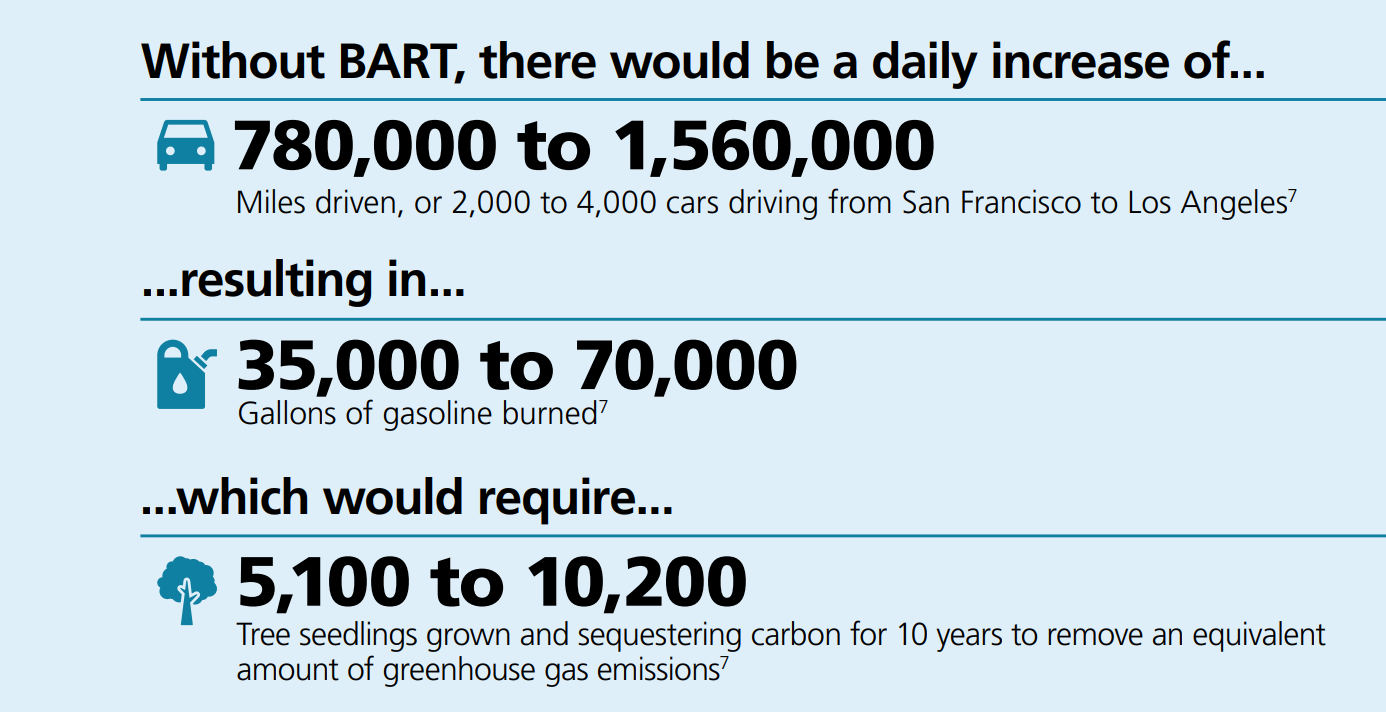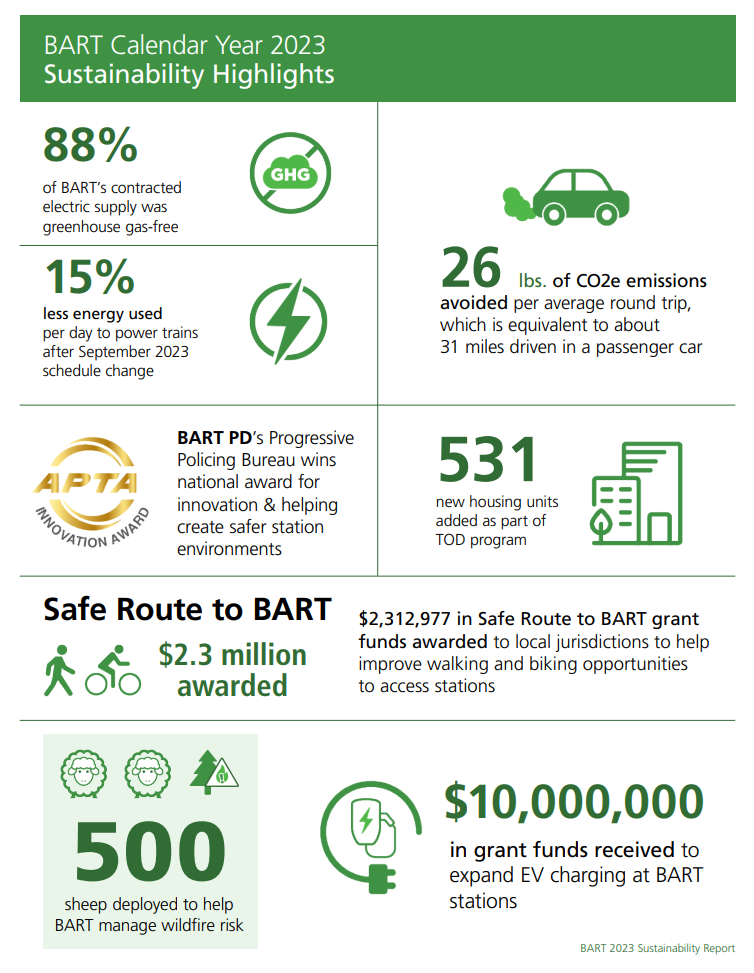Role in the Region: BART plays an important role in the Bay Area meeting its climate goals

In July, BART released the Role in the Region Report, a comprehensive study of BART's impact on the Bay Area illustrated by new analyses, data visualizations, and powerful personal narratives. Over the coming weeks, we'll be sharing some of the key insights from the report in a series of Role in the Region articles here on bart.gov. Click here to read the first story -- on BART's role in reducing regional traffic -- click here for the second story, which explores BART's contributions to the economy.
We encourage you to read the full report - click here - and visit the project webpage at bart.gov/roleintheregion.
Today's post examines BART's impact on the regional economy. See the full report for methodology.
BART is one of the greenest ways to get around the Bay Area and taking public transit is one of the easiest ways to reduce your greenhouse gas emissions.
Consider these facts:
- Transportation accounts for 38 percent of California's greenhouse gas emissions.
- Driving releases 42 times more greenhouse gases per mile than BART.
- Every BART train car moves as many people as 76 automobiles.

California has a 2045 target date to achieve carbon neutrality and help prevent the worst impacts of climate change. The transition to zero-emission vehicles alone will not happen fast enough to meet state and regional climate goals.
What BART Riders Say…
“I think BART makes the world a better place. It provides an economy of scale, is better for the environment, and allows for more urbanization in the region.”
Samantha Greenstone, High School Student at Orion Academy in Concord
Without BART, there would be a daily increase of 780,000 to 1,560,000 miles driven, which is equal to 2,000 to 4,000 cars driving from San Francisco to Los Angeles. Removing an equivalent amount of greenhouse gas emissions would require planting a new San Francisco-sized forest every two years to offset the extra carbon dioxide.
100 percent of BART’s contracted electricity supply has been greenhouse gas emission-free in recent years, and BART is helping transit agencies operating buses achieve their electrification goals with battery charging at BART stations. BART continues to find new ways to lower emissions; our September 2023 schedule change, which introduced shorter trains and only Fleet of the Future train cars running for the base schedule, resulted in a 15% reduction in energy used per day.
What BART Riders Say…
“To me, BART is a sustainable way of life. When I take BART, I feel like I’m doing my part."
Rider from San Francisco, CA
Taking BART and other public transit options is one good thing anyone can do for the planet.
Learn more about BART's sustainability practices and read the 2023 Sustainability Report at bart.gov/sustainability.
